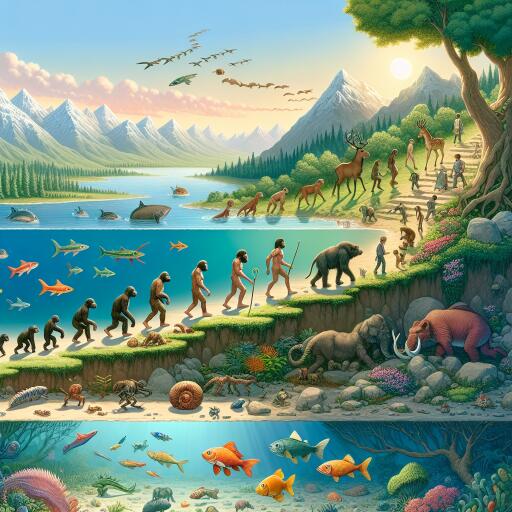
Evolution In Real Time
The year is 1988, and a dense bloom of toxic algae has swept across the Koster archipelago off the Swedish west coast near the Norway border. This ecological disaster led to the decimation of local marine snail populations, specifically the species Littorina saxatilis. These events, however seemingly insignificant, would become the catalyst for an extraordinary scientific observation: the prediction and observation of evolution in real time.
The Koster archipelago, with its larger islands and smaller rocky islets called skerries, was once teeming with diverse populations of L. saxatilis. While snail populations on the larger islands managed to rebound within a few years, the skerries remained barren of these creatures. This outcome, rather than being a mere ecological loss, presented a unique scientific opportunity.
In 1992, marine ecologist Kerstin Johannesson from the University of Gothenburg, Sweden, seized this opportunity. She decided to reintroduce L. saxatilis to the skerry none other than by starting an experimental population recovery. This initiative would prove crucial in demonstrating evolution in the making.
The snails of the species L. saxatilis, found throughout the North Atlantic shores, are known for their ability to evolve environment-specific traits such as size, shell shape, and behavior. Notably, two ecotypes have emerged, known as the Crab and Wave ecotypes. The Wave snails are adapted to environments devoid of predators, characterized by their small size, thin patterned shells, bold behavior, and larger apertures. Contrarily, Crab snails, evolving in predator-rich settings, possess larger bodies, thicker shells, and more cautious behavior.
Before the 1988 algae bloom, Wave snails thrived on the skerries while Crab snails were found on nearby shores. The eradication of the skerry population allowed Johannesson to reintroduce a population of Crab-ecotype snails, a decision that would see these snails undergo fascinating transformations over the following years.
The Crab snails experienced one to two generations per year, allowing researchers to witness their adaptation process. Over the 30-year experiment, these snails adjusted remarkably to their new environment, offering scientists the opportunity to predict their evolutionary trajectory and the genetic regions involved. This rapid adaptation was attributed partly to the pre-existing genetic diversity within the Crab population, facilitating their evolution in the new habitat.
Researchers focused on three key aspects: the physical traits of the snails, individual gene variability, and larger genetic changes involving “chromosomal inversions”. Even within a few generations, these snails exhibited a phenomenon known as “phenotypic plasticity,” swiftly altering their shape to suit their environment. As the Crab snails continued to reproduce, genetic changes compounded, leading scientists to accurately predict genetic shifts and transformations.
This insightful study highlighted two pivotal processes: rapid selection of traits already present at a low frequency within the Crab population and the potential gene flow from neighboring Wave snails migrating over short distances to the skerry. Essentially, this demonstrated how genetic variation enables a species to adapt quickly to changing circumstances.
The implications of this study extend beyond the snails of Koster. It opens doors for understanding how species might adapt to contemporary environmental challenges such as pollution and climate change. When species possess minimal genetic variation, evolving new traits becomes a slow and arduous process. Given the rapid pace of modern environmental changes, it is crucial to focus on species maintenance with broad genetic diversity.
Johannesson’s reintroduced snail population now thrives with about 1,000 individuals inhabiting the skerry. This remarkable story not only showcases evolution as an ongoing process but serves as a poignant reminder of the significance of preserving natural habitats, crucial to maintaining diverse genetic makeups and a resilient biodiversity.





Leave a Reply